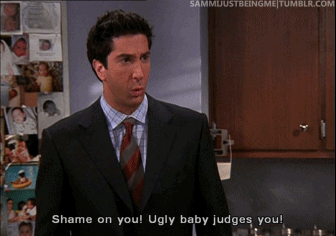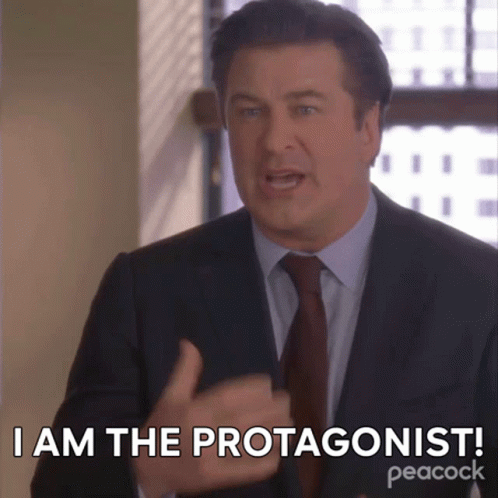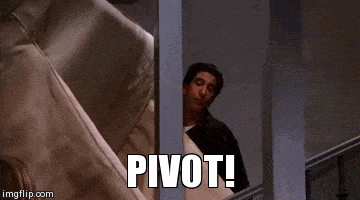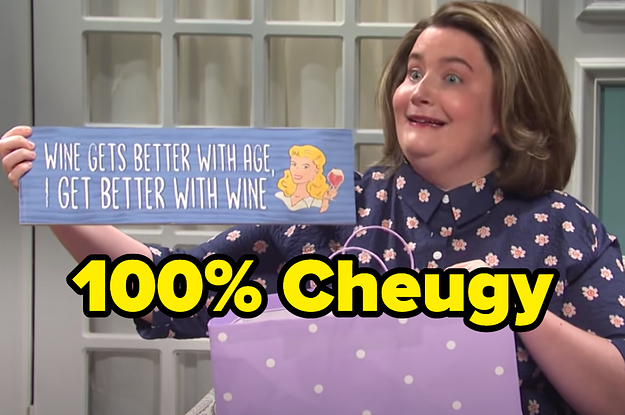There’s nothing worse than putting all your time and creative energy into an email campaign only to find that 5 out of 500 people actually opened it. It feels like a personal attack, kind of like someone calling your baby ugly.

It’s said that 56% of people unsubscribe from emails they deem irrelevant— so while you can’t force people to open your emails, you can curate them in such a way that your recipients can’t help but open them!
How do you do that? By using dynamic content!
Let’s take a look at the ins and outs of dynamic email content and why it’s such a useful tool for businesses.
What is Dynamic Content?
In short, dynamic content is a curated content experience. It’s that “personalized” email you receive in your inbox from your favorite brand. You know the one? When you open it you feel seen, known, and compelled to continuously purchase the products or services.
Dynamic content can be as basic or as personal as you want it to be. It could be something as simple as placing someone’s name at the beginning of an email or as in-depth as switching images based on purchase history or browsing history. It could even be segmenting your email list based on age, gender, race, geolocation, etc. The sky’s the limit when it comes to dynamic content because people are always changing and adapting.
What are the Benefits of Dynamic Content?
Every customer and potential customer should be viewed as someone with unique needs; dynamic content helps you meet those ever-changing needs and in turn, creates loyal customers.
Dynamic content also gives your already loyal customers (and even potential customers) access to things they want to see and purchase instead of just being bombarded with a list of products that are irrelevant to them.
In a way, dynamic email content allows the recipients to participate in their own story within your larger brand story. And in 2022, we ALL want to be the hero of our own story… it’s called *main character energy.* Look it up.

Dynamic content will allow you to:
- Reduce the amount of time spent on creating email campaigns for several different email lists.
- Increase your web traffic and ultimately increase your revenue.
- Help your marketing team figure out what products, services, or content customers want to see more of.
How Do I Create Dynamic Content?
Data, data, DATA!

The first thing you’ll need when creating dynamic content is information about your audience. The more you gather, the better your emails will be.
Pay attention to what kinds of questions are being asked on your social media platforms and what content is being shared by your followers. Gather all information you can from the analytics provided by your email marketing platform, and then test your ideas and assumptions on your audience. When you’ve gathered all your data, create some awesome content—and when it doesn’t work, or if information changes, PIVOT accordingly.
(Can we use two FRIENDS gifs in one blog?)

Final Thoughts
By a show of hands—how many of you are feeling overwhelmed? ✋✋🏿✋🏽 We get it! Creating emails that matter takes time and just a little bit of patience but in the long run, if done correctly, dynamic content can be extremely beneficial to both your brand and your customers. If you need help reworking your email strategy drop us a line, our team would love to sit down with you.
TikTok vs Instagram Reels— Some say it’s the EPIC duel of the century or even the showdown of all showdowns…

But one thing that’s for sure—whether you like it or not—both are becoming an increasingly necessary tool in the arsenal of growing businesses. In fact, experts say that in 2022, 62% of marketers will invest more time and money in TikTok and 54% will increase their investment in Instagram.
But which one should you use for your small business? Is one better than the other? Let’s take a dive into some of the similarities and differences between marketing on TikTok and Reels.
Instagram Reels vs TikTok
Since Instagram Reels’ public debut in August of 2020, most users have viewed it as Instagram’s desperate answer to the growing success of TikTok… a cheugy poser, if you will.

With features like: wellness check-ins, sound effects, dueting, remixing, and facial filters, calling them similar definitely wouldn’t be a stretch.
However, there are some key differences that can affect the way you share content, especially if you’re a small business owner.
The Main Differences Between the Two Platforms
While both platforms offer the ability to share a seemingly endless variety of short form video content, TikTok users (the majority being Gen-Z) appear to be more candid in their presentation. When it comes to TikTok, it’s all about realness, fun, experimentation, viral trends, and casual community. TikTok is the epitome of “give the people what they want.” The famous TikTok “for you page” allows users to see videos curated to their specific interests, making it a new form of content sharing all together.
Side note: We would be extremely remiss if we didn’t stop to give a big round of applause to the TikTok algorithm. It’s borderline scary how well it gives you literally exactly what kind of videos you want to see. From a marketing team to a marketing team, chef’s kiss. For real.
Instagram, however, has become much more calculated over time. What started out as an in-the-moment square photo sharing app has morphed into something very different. And ever since, Instagram users have been carefully curating and endlessly editing posts— all in hopes to achieve the “perfect” grid. Be honest, how many of you have you switched out or deleted a post for fear of messing with your perfect aesthetic? …we’ll wait.

The curated feeds, the “living the dream,” and documenting only the best parts of our lives has caused users to be more reserved in the way they share content on Instagram. And this definitely bleeds over into Reels as well, which remain much more curated than TikToks as a whole.
Marketing Opportunities
TikTok is relatively new to the social media game but it’s already seen growth within the advertising world. So much growth in fact that it caused Instagram to pretty much completely re-work their own strategy. That’s a big deal.
This growth also led to the creation of TikTok Business in 2021. However, it’s important to note that the cost of advertising on TikTok in comparison to other platforms is pretty hefty, with prices ranging anywhere from $50,000 to $120,000. *insert gasp*

Although these prices are deeefinitely too high for small businesses, there are many different ways to advertise on TikTok other than using its advertising program.
When it comes to marketing, Reels are leading the charge by integrating shopping features into their platform by allowing businesses and makers to tag their products when creating a Reel, making them a “one stop shop.” When a customer taps the “view products” button, they can choose to purchase, save, or learn more about a product. Added bonus, all of these things can be done without having to leave the app via the Instagram Checkout feature.
So Which Platform Is Better For My Small Business?
At the end of the day, both TikTok and Reels can be advantageous to your small business or personal brand, so don’t be afraid to experiment and even bounce them off of each other and make them work for your business.
While TikTok is a great place to experiment with trends, engage with a younger audience, and create a more casual online community… Reels are a great way to add some depth to your Instagram content and expand your reach with a bit older audience.
(Pro tip: the algorithm LOVES when you use Reels, and all of your posts will perform better when you begin to use them.)

Final Thoughts
When you own a small business, engaging with your consumers is the key to getting your business name or brand out there. Feeling overwhelmed? It’s fine and you’re fine.

Really! Because our team is here to help you come up with a social media strategy that works best for you and your small business.
So what are you waiting for? Contact us today to schedule a consultation!
They’re creatives, activists, trend setters, the gatekeepers of all things cool, and what they say quite literally changes the world. Of course we’re talking about Gen Z.
Born between 1996 and 2010, these “digital natives” probably don’t remember a day without the internet or social media. And with smartphones in hand, they’re not only classy, bougie, and ratchet, but some of them are grown—and collectively have a spending power of over $140 billion.
With the rise of TikTok and Instagram Reels, Gen Z is demanding more than just pretty photos and fun videos from brands to win their trust and loyalty. The generation determined to flip the world upside down is now bringing their socially responsible (& disruptive) attitude into the market.
So let’s take a look at four things to keep in mind when trying to connect with this ethics-driven generation:
1. Establish Clear Values & Mission
Before you try to connect with Gen Z, ask yourself, who are you standing with and what are you standing for? Establishing and communicating your brand’s values is important when marketing to this generation’s cool kids. But why? Gen Z-ers are more likely to spend their money on and lend their voice to brands that have values that mirror their own. Values such as diversity, environmental sustainability, and LGBTQ rights. Gen Z believes that the brands they support have the moral obligation to change the world we live in, meaning you no longer have the option to remain neutral about important issues.
2. Be Transparent & Accountable
This generation seeks truth and authenticity, and they will not only go to great lengths to find it, but they’ll also want to verify it. Your past and present social media accounts, reviews, comments, and responses will all be scrubbed through before trust is given. So make sure that after clearly establishing your values, you stick to them… and if you happen to misstep, you own it. When trying to connect with Gen Z, inconsistencies between your external and internal company values can lead to the disintegration of your brand (looking at you Abercrombie and Fitch).
3. Play Around With Using Interactive Content
When it comes to capturing the ever-scrolling eyes of Gen Z, you’re going to need a combination of creativity and interaction. They don’t just want to look at something pretty. Gen Z actually wants to do something, on and off the internet. So give the people what they want! Use swiping, polls, and quizzes—anything to encourage discussion and interaction. This can help you get a gauge for what kind of things they want to see from your brand. Keep in mind, with the average attention span of Gen Z-ers being 8 seconds, you have a very short window of time to communicate why your brand is worth looking at—that’s where creativity comes in!
4. Build A Community
Mass followings and viral videos aside, surveys say that Gen Z is the loneliest generation, which is why they gravitate towards like-minded brands with messages they feel they can lend their voices to. Creating community within a brand goes beyond asking the most popular TikTok or Instagram star to promote your brand. It can include real people with real stories that can advocate for your brand and add to the story you’re telling. When Gen Z feels like the hero of the story, or at least a part of the Avenger team, they’ll engage and invite others to do the same.
Final Thoughts
As a refresher… remember, when marketing to Gen Z, make sure to: establish clear values, be accountable and transparent, have fun, and create authentic connections. *Deep breath* We know that seems like a lot but don’t worry, we’ve got you. If you need help tweaking/completely reworking your marketing strategy, we’d love to help! Drop us a line.
The devil works hard, but the Instagram development team works harder… It seems like every week there is a new feature to try.
Honestly, it can be a lot… even for us, and we work in Social Media. But as always, we’ve got your back… so we put together a handy list of new features you may want to utilize! Here they are:
“Add Yours” Sticker
Chances are you’ve already seen at least one person share the new “Add Yours” sticker to their Story. The sticker is exactly how it sounds: you add a photo that matches whatever the prompt is.
The “Add Yours” sticker is set up to be a chain reaction that starts with the poster’s followers and then spreads to any user on Instagram. It’s a huge opportunity for reaching a new audience and driving engagement.
How to:
- Tap to add a new Story
- Tap the Sticker icon
- Choose Add Yours Sticker
- Type a theme or choose from the available questions/topics
- Post the Story
Link In Stories For Everyone
FINALLY—everyone has the ability to add links in their Instagram Story— now via Stickers. (Yes, even those with less than 10K followers!)
Instagram has officially retired the Swipe Up link in Stories that was exclusive to those with 10k+ followers. Now Link Stickers appear on screen just like any other Instagram Stories sticker — but with the addition of a link icon!
What makes this great news even better is that now viewers can react and reply to a Story that includes a link, which allows for more engagement. Previously, Stories with links could not be replied to.
“Collab” On Feed & Reels
Collabs allow users to be able to co-create & co-post Instagram feed posts and Reels – allowing both accounts to potentially reach new audiences through each other.
How to:
Once you upload your post, go to the Share screen like you normally do, but then tap “Tag People.”
There will be a choice in the bottom right to “Invite Collaborator.” Tap that & search to find the user you want to collab with.
Upload Photos And Videos From Desktop
Users can now post Feed images or videos from the desktop app on their computer!
How to:
Log in to Instagram on a PC or Mac and click “+” at the top of the screen.
Then drag and drop a photo or video from your computer, edit your visual, write your caption, add your hashtags, and then post!
Text-To-Speech Feature On Instagram Reels
Yep, this popular TikTok feature is now available on Instagram Reels!
This new feature is great for story telling. It’s a robotic voice-over that sounds a little like Siri (or Alexa for you Android users).
How to:
First, use the regular text tool and type out what you’d like to say onto your Story.
Then, tap on the text button at the bottom of the screen until the “hidden” menu pops up, then select “Text-to-Speech.”
“Limits” To Hide Abusive Messages
Instagram is finally working hard to protect its users from abusive or bullying comments and DMs.
“Limits” now allows users to limit or hide comments/messages coming from users who are not following or who have just followed.
This option is available globally for all Instagram users using the app.
How to:
- Got to Settings
- Then Privacy
- Then Limits
- Choose what group you would like to limit and for how long
- Click Turn On
Hidden Words
Like “Limits,” another feature that Instagram hopes will protect users and have a positive impact on mental health is the option to hide certain words in comments or direct messages.
This feature allows users to filter certain words, phrases, and emojis that they find offensive. Any message or comment that includes a hidden word will be redirected to a separate “hidden” folder.
How to:
- Go to Settings
- Then Privacy
- Then Hidden Words
- Choose what words you want to filter
Instagram Reels Play Bonuses
Facebook (Err… Meta) recently announced that they are committed to investing over $1 Billion in programs for creators through 2022.
To sum it up: creators make money based on the number of plays their Reels get.
As long as you have a business or creator account (and access to the program) all you have to do is share a Reel to Facebook or Instagram. Instagram will pay out on Reels that get at least 1,000 views over a 30-day period.
Final Thoughts
Whew! You made it through the list. Like we always say… don’t feel like you have to do it all or keep up with those pesky Joneses… But did you see a few you’d like to try? We hope so!
If after reading all of this you’re just DONE trying to go this alone, we would love to help with a social media strategy session or even full social media account management. Let’s chat!
For decades, “experts” in marketing have touted the idea of hiding your pricing and highly discouraged clearly publishing prices online. The thought behind this— you want to be able to engage with as many potential customers as possible and by getting them to reach out and ask for your pricing, you have more potential leads.
Seems logical, right? Who doesn’t want more calls? But in 2021, we believe there are other more important factors to consider.
The Death of the Phone Call
In short, most people simply don’t want to have to call and ask questions in 2021. We’re sure you’ve seen plenty of memes about how much people hate talking on the phone. This alone can tell you the current climate of our society, which bleeds over into business as well.
According to research conducted in 2017, 88% of consumers will price shop and compare products online before engaging directly with a business or making a purchase. People want to visit a website and get all the information they need in one place to make an informed decision. No one wants to experience the awkwardness of admitting they can’t afford a service after asking for the price over the phone.
The bottom line is, if your website says “Call for Price,” you are immediately losing out on a ton of potential customers who will just hop over to a competitor’s website that offers more information.
Not to mention, today’s consumer has a very short attention span… so even if they are willing to call for price, there’s a high chance that they’ll get distracted by an incoming text or email before they ever get to the actual phone part of their phone. Needless to say, the chances that they’ll remember to call after that are even slimmer.
The “Unaffordability” Assumption
You may be nervous to put your pricing on the website for fear of losing potential leads, but we happen to think you may lose a lot of potential customers by NOT adding it.
Did you know that when you don’t publish your price/range on your website, that will automatically cause many potential customers to believe that you’re out of their budget? Yep. It’s a real thing— fear of the unknown.
When people can’t find the price, they often assume the worst. They often think your services must be targeting wealthier people who don’t consider price as highly in the purchasing process. Hiding your prices may be scaring away more potential buyers than providing it upfront.
Don’t Waste Your Time
A new lead comes in! After going back and forth over several emails, coordinating a time, holding a discovery call, and preparing a proposal… you find out they were never going to be a potential client for you. You were always going to be way out of their budget. Sound familiar?
The truth is, not everyone is in your target market. Some people will want the service cheaper than you offer, while others need something more complex and expensive.
So instead of spending time filtering through incoming “leads” that will never fit in your range of services, spend your time more productively. There’s not a single business owner that doesn’t need more time!
Putting a price (or at least a price range) right on your website saves you the hassle of hours of work that only ends up frustrating you in the long run.
When people see your prices and know they can’t afford your services or products, they will likely never request a meeting or discovery call. You didn’t lose a good lead, you saved yourself a lot of hours and frustration.
Build Trust with Your Audience
Upfront pricing also builds brand trust, so be confident in your pricing! Learn your target market like the back of your hand so you can more easily find them, or better yet, help them find you.
Who are they? What do they do? What’s their budget range? If you’re the cheapest around, the complex high-end client may not be in your target audience. Or if you’re the most expensive, budget shoppers won’t bite. Remember— not everyone is going to be your target audience, and that is okay.
But by giving a price range upfront, you build trust with your target audience because they can self-qualify that they are in your target market before they ever contact you the first time.
How to Handle Custom Services or Products
Sometimes you can’t list your prices, because your services are fully custom and each person gets a customized quote based on what they need from you. We totally get that, because that is how our agency works, too. In this case, we recommend providing a price range or a “Starting at…” on your website.
You don’t have to put all your price customizations, but just give a general range or starting point. You can even include the caveat that the prices are subject to change based on the amount of customizations/work/client allowing yourself room to negotiate a fair price for each service or product.
For example, on our site, we state that our fully custom and SEO optimized websites start at $4500. However, depending on the client’s needs and customizations, it could get much higher than that. That said, if someone is just starting a business and is looking for a $500 Squarespace site or the equivalent, they already know that we would not be a good fit. And that’s okay!
That saves us time and energy to put into the businesses who do want and need what we have to offer.
Final Thoughts
The bottom line is most potential customers want to know your pricing up front, or to at least get a ballpark figure, by visiting your website.
You don’t really want to spend time convincing people on the phone to work with you when they really can’t afford to or don’t see the value in what you offer! Trying to convince anyone to become a client is something you can choose to avoid by being open with our price range on your website.
Here’s our advice— Own your value and add your price or price range to your website. The right clients will come along.
Remember back in 2020 when basically every ad was some big corporation telling you they are here for you or trying to make you cry in the middle of a Tuesday? We definitely do. But if you’re one of those people who have blocked 2020 from your memory, just watch this Amazon ad for reference—
Whew…
But for real, we just all collectively went through a year of extreme uncertainty and fear. And we don’t know about you, but we are more than ready for everything to feel settled again!
In fact, Summer 2021 turned out to reflect a desire for community, fun, and freedom for most people—and well, getting back to some sort of semblance of normalcy. But was that also vibe in the advertising world?
With Summer winding down, we’re looking back on a few brands with advertising campaigns that made us even more excited for “Hot Girl Summer.” ???? You tell us if they passed the Summer 2021 vibe check:
Adidas
Alright kids… long before the age of social media and television ads (when people walked to school uphill barefoot in the snow), there were these things called billboards. In fact, billboards have been used since the 1830’s… And well, Adidas just came along and changed the whole game.
In an effort to announce the debut of their recent inclusive swimwear collection, Adidas installed the world’s first liquid billboard.
That’s right. Adidas installed a swimming pool holding 11,500 gallons of water on a popular beach in Dubai. The purpose of the ad was to reinforce that all women should be able to be confident in their swimwear no matter their appearance, and all the women in the vicinity were invited to take a very public dive into the pool.
The goal of this campaign is to encourage women of all shapes and sizes to feel powerful and comfortable in their swimwear. Senior Brand Director at Adidas Amrith Gopinath said, “Our belief is that nobody should be prevented from enjoying the benefits of being in and around the water, hence the recent launch of our diversified product offering for all women and our burkini collection.”

Budweiser
We wouldn’t expect any less from the brand that brought us the culture changing “WASSUP” commercials. In late June, Budweiser released a commercial called “Go Fourth, America” that featured actor Bill Pullman reprising his famous presidential role from “Independence Day” for the first time in 25 years. In his speech, he celebrates how America has rallied together to overcome the challenges of the pandemic and encourages the country to look towards a brighter future. “Go Fourth, America” also highlights a donation from Budweiser to Direct Relief, a humanitarian aid organization focused on enabling vaccine access in the U.S. and globally.
While it’s certainly not super cheeky like the beloved WASSUP frogs of old (AKA: the 90’s), this commercial gave us nostalgia, made us laugh, and almost made us cry. In a time with so much division, Budweiser found a way to connect with so many people with different backgrounds. No matter your political stance, it’s hard to watch this ad and not catch feelings. If you haven’t had a chance to watch it yet, check it out here—
Snickers
This one might just be our favorite because Snickers really said, “I see you and I understand you,” to the working middle class. Snickers’ summer campaign is a series of videos showing people on vacation that just can’t quite relax. The only solution? A Snicker’s ice cream bar.
Picture this. You’re sitting on a beach with your bestie sunbathing and reading a nice book. Just then, a plane flies overhead… and trailing behind it is a message from work that ruins the whole vibe. If you’re triggered, you’re not alone. The plane is definitely a metaphor for how our phones have made us accessible at all times. It’s a call-out to our current culture which doesn’t really allow us to ever truly disconnect.???? Yikes… We’re pretty sure we can all relate to this one.
Oh, and here’s a little bit of insider info—This ad actually utilizes weather-based triggers for ads on Youtube, Facebook, Snapchat, and other mediums whenever the temperature rises past certain points depending on the market. That’s right, Snickers knows when you’re starting to sweat, and they’re using it!
Final Thoughts
These campaigns are all great examples of how much the advertising industry changes depending on current events. And listen, marketers have their work cut out for them, because the average consumer has gotten a lot smarter (looking at you!) and a lot more in tune to when they’re being manipulated or over-advertised to.
With the overload of campaigns and advertisements in our current climate, companies have no other choice but to think of new, creative ways to stand out. We’ve found that the biggest change in the last year is that consumers are more motivated by social justice movements than ever before. Equality is now ranked the number one biggest motivator, and diversity went up more than six places in ranking in one year. For the most part, consumers are basically saying, either get woke or get left behind.
We’ll keep watching to see how long this type of advertising is trending, and we’ll be on the lookout for what’s coming next!
Press release pet peeves, press release pet peeves, press release pet peeves… try saying that out loud 3 times fast. For most people, writing a successful and poignant press release can be… well, even harder than saying “press release pet peeves” 3 times fast.
But that’s why we’re here! We’re going to tell you some concrete and easy (although we may be using that word lightly here…) ways to make your press release more effective.
If you’ve been stumped trying to get your big event, grand opening, or new product noticed by your local press, a lot of people can relate. It’s kind of a whole thing.
Thankfully over the years, we’ve learned (the hard way a few times) how to write a killer press release that gets your business noticed and, well, doesn’t peeve the people you’re sending it to.

So, here are the top five biggest press release mistakes (according to us) and what to do instead to catch that journalist’s eye:
1. Not Prioritizing the Title of Your Press Release
It’s easy to discount the importance of a title when you feel the press release speaks for itself, but journalists sift through hundreds of press releases every single day. So it’s SUPER important to grab their attention as soon as possible to avoid being tossed in the “not-newsworthy” pile. Basically, you want to click-bait them, without the click-baity-ness. (Is that a word????? )
The goal of your title should be to make it immediately obvious what audience you’re wanting to reach and why they need this information. PRO TIP: it can be extremely beneficial to update your title depending on the news outlet or audience you’re reaching out to. Your information might be useful to people of all ages, but the title needs to cater to the type of outlet that you’re hoping will share your story.
2. Including the Wrong Amount or Wrong Type of Links
Alright, this is where it gets tricky. You don’t want too many links… or not enough links… or links that don’t further your narrative. (How many times can we say, “links”?) Links are where a lot of people seem to either take it too far or just not put any at all. We’re here to save you from this blunder!
In 2021, press releases should no longer be written as though they’re going to be read off a sheet of printed paper. They’re going to be read digitally, so make them interactive! A great press release will be an interactive experience where the reader can move between reliable links embedded in the document, along with photos and videos that help in educating them.
We suggest using 2-4 links depending on the length and subject matter of your press release. Any more than that, and your hard work begins to look like spam, and your readers no longer take the time to follow any of the links. ????????♀️ It’s also important to be intentional when choosing your links. Before adding any link, make sure it’s relevant to your topic and your target audience, and that it adds value to your story.
When used correctly, links will boost audience engagement AND push more people to your website. (Yay!)
3. Only Using a Distribution Service
There’s definitely value in distribution services. Basically, distribution services work to distribute your press release for you. They allow your press release to end up in the inbox of hundreds of journalists and can lead to tons of backlinks for your website.
BUT
Distribution services are becoming less beneficial for small brands because they can get buried in a sea of PR from huge companies.
Instead, try to build relationships with journalists! Send personalized messages to offer product samples, interview quotes, and attached photos with your press release. Journalists love when you give them a story and all the elements they’d need to run with it right away. Try to make their job as easy as possible, and we promise it’ll pay off.

4. Lack of Focus
People often feel rushed when working on a press release, because as we all know, “time is money.” But in reality, a rushed, unfocused press release can be a huge waste of your time because it’s unlikely to ever gain any traction.

Many business owners can struggle to be direct and stay focused on the main goal of the press release. We get it. You’re not a writer, you’re a business owner! That’s ok. Here’s what we suggest: start with an outline that creates a story. The business, product, or event you’re promoting should be secondary to the main goal of creating something that people want to read. You need to have one subject, one idea, and one goal that you’re striving for with every sentence.
If there are multiple aspects that you need to promote, we suggest writing different press releases for optimal results.
5. Not Making it Topical
Is it NEWSWORTHY? Ask yourself this question at every stage of the writing process, because that is the question every journalist is trying to answer before they invest their time. The goal is to step back and look at it from the readers’ eyes. If you weren’t involved in the project or company, what would make you want to read about this topic? What do you think will get people really talking? Your press release must be valuable beyond just your own interests, because if it’s not, you risk damaging your reputation and even blacklisting yourself to journalists. (???? ) This might sound harsh, but they may not ever spend their time reading any of your future press releases as well once you’ve let them down.
So, our best advice is to spend some time reading topical news and try to find a new angle that people aren’t talking about yet. This automatically puts you a few steps ahead of the other 100 press releases in the journalist’s inbox. If you aren’t able to do this, show how a popular industry trend is related (even in a small way) to what you’re doing. There are lots of ways to make something mundane become newsworthy—celebrity endorsement, human interest, novelty/rarity, proximity, and more.
For example, the event at your business might not be newsworthy, so why not give a percentage of proceeds to an organization to a local organization with a great cause? Voilà! NOW people want to learn more about what you’re doing. Plus, you get to help people in the process.
Pro tip: Make sure to give to an organization you genuinely care about and want to support.
Final Thoughts
In conclusion, our BIGGEST pet peeve is a press release that goes out before it’s ready. A good press release takes tons of time and energy, but when done correctly, they’re more than worth it!

And hey, if this is way over your head or if you need to stay focused on big picture business decisions, we can always help with PR for your next big adventure.
It seems crazy that it’s been an entire year since the pandemic started. Just think, a year ago we were all either binge-watching Tiger King in quarantine, learning a TikTok dance, baking bread, or becoming first-time plant parents. ????
Does anyone else miss in-person networking or big conferences? ✋????
Over the past year, virtual events have increased significantly, for obvious reasons. According to a survey by wirke.com, only 42% of organizations were holding virtual events before the pandemic, but now that number has doubled to 84%.
Those statistics are pretty hard to ignore. So what’s the big deal about virtual events and will they stick around post-pandemic? We happen to think they will, so we’re going to share a few insider tips & tricks to help you host a great one…
What Is A Virtual Event?
A virtual event is simply an event that’s hosted online through either pre-recorded videos or live streaming. Social media platforms have all upped their live streaming abilities in recent years, projecting the importance of virtual connection well before the pandemic. (Wait….. No let’s not go there.) TikTok, Instagram, and Facebook are all great places to go LIVE for a virtual event, and each platform has its own pros & cons as well as its own target audience.
Why Host A Virtual Event?
Even though the pandemic has put virtual events in the spotlight (mostly because no other type of events were allowed ???? ), virtual events have always had benefits independent of social distancing, and they will continue to in the future. Hosting a virtual event can benefit your business because it can reach an audience that normally wouldn’t be able to attend an in-person event due to busy schedules, financial restraints, or physical disabilities.
As a small business, virtual events are a great way to talk to your audience without breaking the bank. They’re much more cost effective than in-person events because there’s not a physical space to rent out and well, wine and charcuterie are expensive… ????????♀️
Virtual events are often used for:
-
- Training courses or classes
- Behind-the-scenes tours
- Interviews
- Raising Awareness
- Conferences
- Giveaways
- & More
So, Now That You Know What A Virtual Event Is, How Do You Plan One?
Step 1: Create A Detailed Game Plan
Even if your event is in-person, it still takes planning! Having a schedule for the event will keep your team organized and ready to perform. (Pro-tip: If segments become too long, audience members may hop off the Live Event. Keep the event interesting by having a list of commonly asked questions to answer during a demo.)
It’s important to give your team specific roles for the event. The amount of people working an event will vary, but here are some examples:
1. A Camera Person – They should understand what angles are best for the event and to make sure the Live is running smoothly.
2. A Comment Monitor – It’s important to have eyes on the comment section so the audience can ask the questions and feel like they are participating.
3. A Director – This is one of the most critical positions during a Live because they make sure everything stays on schedule, they can give (silent) direction to keep things moving, and they can signal to the MC or host to give more energy.
4. An MC – This is your star! Whoever is the most comfortable giving energy, but also knowledgeable enough to answer questions about your business should be your go-to MC. (Pro Tip: Virtual Events require even more energy than in-person events. If you feel ridiculous, you’re probably giving enough energy for a virtual event.)
Step 2: Pick The Right Day And Time For The Event
Analytics and insights are your best friend. If most of your audience is working during the day and time you choose, the event won’t do as well! So checking your social media analytics will help you choose the best time for your specific target audience.
Step 3: Promote, Promote, PROMOTE!
Alright, this is the fun part. Promoting the event at least 2-3 weeks before is generally the best practice for a virtual event. If you promote too early, your audience may forget, but if you promote it last minute, they may not be able to make time to attend.
There are a lot of great ways to promote virtual events— Social media posts, email marketing campaigns, posting in local groups, and using interactive Stories are all great ways to promote for free! We happen to think promotion of virtual events should be done holistically, meaning use every channel you have to reach the most people.
Step 4: Make It Fun, Engaging, And Inclusive!
Since your audience isn’t in-person, it’s even more important to remember to include viewers in the conversation! Encouraging your audience to ask questions and holding small giveaways throughout the event will keep your them interested and most importantly, will keep them from X-ing out of the event to get back to scrolling their feed. Who doesn’t love free stuff? ????
Final Thoughts
One of the most critical pieces of advice we can give you is: have a practice run-through. During the run-through, you can get an idea of what needs to be changed before the event. Remember tripods for the cameras, make sure all batteries are charged, print out the schedules, secure a laptop & a phone to monitor how the event is going, and grab lots of coffee to excite your speakers. (Caffeine is a good idea, always. ☕️)
Problems are bound to happen, but you’ve got this!
We encourage you to consider adding virtual events to your marketing strategy to increase your brand awareness on a lower budget, reach new target markets, and overall to freshen up your marketing game.
Does this help? Let us know!
It’s our favorite time of year! That’s right, the 2021 Web Design Trends round-up is here. We’re breaking down our very favorite web trends, but this year we especially want to share trends that our small business clients can actually utilize.
Chances are, small business owners aren’t going to have the budget to overhaul their website with every new passing web design trend. So, let’s look at the trends that have either had staying power in the last few years, or we project will stick around in the coming years.
1. Retro Elements & Fonts
We’ve seen things come back in style that we never… I mean never thought we’d see. (Lookin’ at you, mom jeans.)
Right now, throwback typography and design are having a moment. Remember when retro meant the 70’s? Well get ready to feel old. Retro now means the 90’s. Yep. We’re starting to see a fun trend of reimagining of classic 90’s fonts, designs, and logos… And it’s being called “retro.” We’ll just go sit and think about that while we reconsider our skinny jeans and side parts. ????


2. Horizontal Scrolling
Previously thought of as a faux-pas, horizontal scrolling is a fun surprise to make your website stand out.
We’re seeing more web designers experimenting with horizontal scroll. Those who do it best don’t do it just for the sake of being different, but also as a practical way to share information in a good user flow, such as Goodfight’s current website. Their use of horizontal scroll causes visitors to see more of their products in the order they want them to before they leave the page. Horizontal scroll is also a good way to make yourself stand out if you’re in the creative field, like zerocodegirl.


3. Multimedia
With faster internet speeds becoming more accessible (???? ), multimedia web experiences are becoming a more popular choice in web design. Putting together a mix of text, imagery, video, and audio creates a captivating and highly engaging user experience for any website homepage. And let’s face it, nothing can sell a business online like a well-done video.


4. Gaussian Blur
We love a good design evolution. Bright & bold gradients have been on trend in recent years, but this year we’re seeing gradients evolve into a soft Gaussian blur. These soft swirl and soft focus gradients provide a calm and cool aesthetic that doesn’t try too hard.


5. Surrealism Illustration
Illustration, and specifically Surrealism, isn’t going anywhere this year. Surrealism often uses dream-like scenes, symbolic images, as well as unexpected, and illogical juxtapositions. We have loved seeing all of the super fun turns in illustration styles over the past few years, and we see illustrations continuing to replace photography-only design, at least in the near future. Here are some we like, and check out the Gaussian Blur on the Analytica Alimentaria website. Bonus points for using 2 trends!


6. Dark Mode Design
Dark mode is becoming even more prevalent in 2021, so more designers & brands are embracing the dark mode aesthetic. It’s just the reality, and we’re thinking if brands don’t adapt design to work with dark mode, they may fall behind. But hey, have fun with it! Black is the perfect dark backdrop to create designs with colors that pop.
Plus your eyes and your frown lines will definitely be thankful for this trend. ????


Final Thoughts
We hope this list helped! Did you have any favorite website design trends? Are there any you see matching your brand aesthetic? As a small business with a small budget, you can still have a modern, of-the-moment, but classic site… one that will give you the most bang for your buck! We’d love to help.
If you’ve been in a #MOOD ever since Instagram took away the Recent Hashtags tab in November during the election and stayed there through what we’ll lovingly call the “December Drop” in engagement, we’re here for you. (Isn’t that what businesses are supposed to say now-a-days? ????) But for real… we are.
Every year in December, Instagram rolls out shiny, new changes to everyone’s favorite thing: the algorithm. Add in the distraction of holidays, and this leads to an annual period of low engagement across the board.
Is There Something Wrong With Me If My Engagement Is Down?
This is really annoying, but it’s nothing new, so trust us… there’s nothing wrong with you if your engagement has been down, and it will level out eventually. But in the meantime, we have some tips that may help you boost your engagement, and maybe even get it higher than it was before the recent slump!
Before we get to our #tips for boosting engagement, let’s bust some algorithm myths we’ve seen circulating the interwebs. Is it too soon to say #fakenews? Got it. Let’s get to the list.
The Current Top 3 Instagram Algorithm Myths:
Myth #1 — Instagram Will Punish You If You Edit Your Published Posts
There’s a rumor out there that Instagram will punish you if you edit a post after it is published. There’s even a popular post with what we’re guessing is just anecdotal evidence showing two posts with drastically different engagement, one of which was edited. Here’s the thing. Instagram will not punish you for using a feature they provided to help you. There is tons of evidence showing that editing posts doesn’t hurt engagement. And at the end of the day, if Instagram didn’t want people to edit their posts, they would have never added an edit button. Looking at you, Twitter.
Myth #2 — Instagram Will Punish You If You Use Too Many Hashtags
Here’s another case of “why would Instagram punish you for using a feature they provided?” Instagram currently allows accounts to use up to 30 hashtags per post. If they wanted you to use 10 hashtags, that would be the max. So our advice is to maximize reach by using as many hashtags as you can.
Myth #3 — Instagram Will Punish You If You Use A Partner App To Schedule Posts
Different rumor, same answer. Instagram allows a few official partner apps to schedule and auto-publish posts to their app. Official Partner is code for $$$. Considering Instagram is making money through these apps, it’s highly unlikely that they would punish the apps on their platform. That’s just bad business.
The Current Top 3 Instagram Algorithm Boosting Tips
Tip #1 — Be Consistent
It’s no secret that the algorithm encourages posting as much as you can. But if you don’t have the margin to post quality content every day twice a day (because literally who does?), the next best thing to posting all the time is to be consistent over time. Our advice is to post consistently at the same time over a long period of time, post 3x per week on the same days each week, or posting every other day. Do this for a while and see if anything changes!
Tip #2 — Use Reels
Specifics about the algorithm are usually debated, but one that is agreed upon across the board is that Instagram Reels are currently boosted and favored in the algorithm. If you’re not posting Reels, the algorithm is going to punish all your posts. If you post Reels, the algorithm will reward you with engagement across all of your posts, not just Reels. So if you have the margin, get your creativity on.
Tip #3 — Use #AllOfTheFeatures
Instagram likes when you use all of the things, and we mean all of the things. Feed posts, Stories, Reels, IGTV, Shoppable posts, lions, tigers, and bears… oh my, that was a dad joke. Sorry. Anyway, this includes special features on Stories like the “I Voted” sticker, polls, sliders, etc, etc. So buy in… do all the things… make a deal with the Devi— Okay too far. I think we may be in a #mood, too.
Final Thoughts
We know this seems like a lot. If you can’t do it all, don’t go crazy trying to keep up with the Algorithm Joneses. Just do what you can when you can. Try some of these tips. A little change is better than nothing. And as always, if you’ve thought about outsourcing social media for your own sanity and to maximize your ROI, we’d love to help!